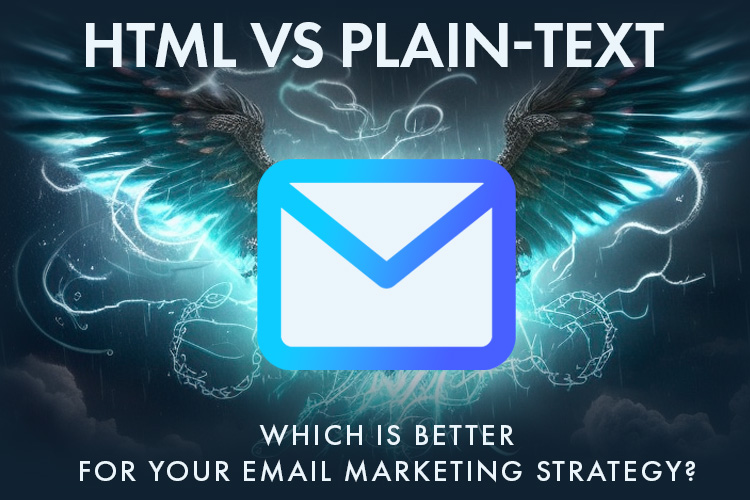The Pros and Cons of HTML, Plain-Text, and Rich-Text Emails
Email is a crucial communication tool for individuals and businesses alike. It’s a fast, convenient, and cost-effective way to stay in touch with customers, colleagues, and friends. However, with so many different email formats available, it can be challenging to determine which one to use for different purposes. HTML, plain-text, and rich-text are the three main email formats, each with its own set of advantages and disadvantages. In this article, we will discuss the differences between these email formats and help you determine which one is best suited for your email marketing strategy.

HTML Emails
HTML, which stands for Hypertext Markup Language, is the most widely used email format. It allows for a wide range of design options, such as adding images, videos, and links, making it an ideal format for businesses that want to create visually appealing and interactive emails. HTML emails can also be customized using CSS (Cascading Style Sheets) to create unique and engaging designs that align with a brand’s visual identity. Additionally, HTML emails can track user engagement, such as open rates and click-through rates, providing valuable insights into email performance. However, one disadvantage of HTML emails is that they may be blocked or filtered by some email clients or spam filters, resulting in reduced deliverability rates.
Plain-Text Emails
Plain-text emails are the most basic and simplest email format. They are composed of unformatted text, making them easy to read and accessible on all devices and email clients. Plain-text emails are also less likely to be blocked or filtered by spam filters, ensuring higher deliverability rates. Additionally, they load faster and consume less bandwidth than HTML emails, making them a good option for businesses targeting audiences with slow internet connections. However, the lack of formatting options may make plain-text emails less engaging and less effective in conveying important information or calls to action.
Rich-Text Emails
Rich-text emails are similar to HTML emails in that they allow for some formatting options, such as bolding, italicizing, and underlining text. Rich-text emails are an excellent option for businesses that want to add some visual interest to their emails but don’t require the full range of design options offered by HTML emails. They are also more accessible than HTML emails, as they can be read on all devices and email clients. However, like HTML emails, rich-text emails may be blocked or filtered by some email clients or spam filters, resulting in reduced deliverability rates. Additionally, rich-text emails may not provide as much tracking data as HTML emails, making it more challenging to measure email performance.
When to Use Each Type of Email
Determining which type of email to use largely depends on the purpose of the email and the audience you are targeting.
- HTML: HTML emails are an excellent option for businesses that want to create visually appealing and interactive emails, such as newsletters, promotional emails, and event invitations. They are also effective for businesses that want to track user engagement, such as open rates and click-through rates.
- Plain-text: Plain-text emails, on the other hand, are a good option for businesses targeting audiences with slow internet connections, or those that want to ensure higher deliverability rates. They are also effective for transactional emails, such as order confirmations and password resets.
- Rich-text: Rich-text emails are ideal for businesses that want to add some visual interest to their emails without the full range of design options offered by HTML emails. They are also more accessible than HTML emails, making them a good option for businesses that want to ensure their emails are accessible to all recipients.
Ultimately, the decision of which type of email to use should be based on the goals and objectives of the email campaign, as well as the preferences and needs of the target audience.
Conclusion
In summary, choosing the right email format for your marketing strategy requires careful consideration of the goals and objectives of your email campaign, as well as the preferences and needs of your target audience. HTML emails offer the most design options and tracking capabilities, while plain-text emails are the most accessible and have higher deliverability rates. Rich-text emails provide a middle ground between the two, offering some formatting options without the complexity of HTML. By understanding the differences between these email formats, you can make an informed decision on which type of email to use for your business and marketing needs.
